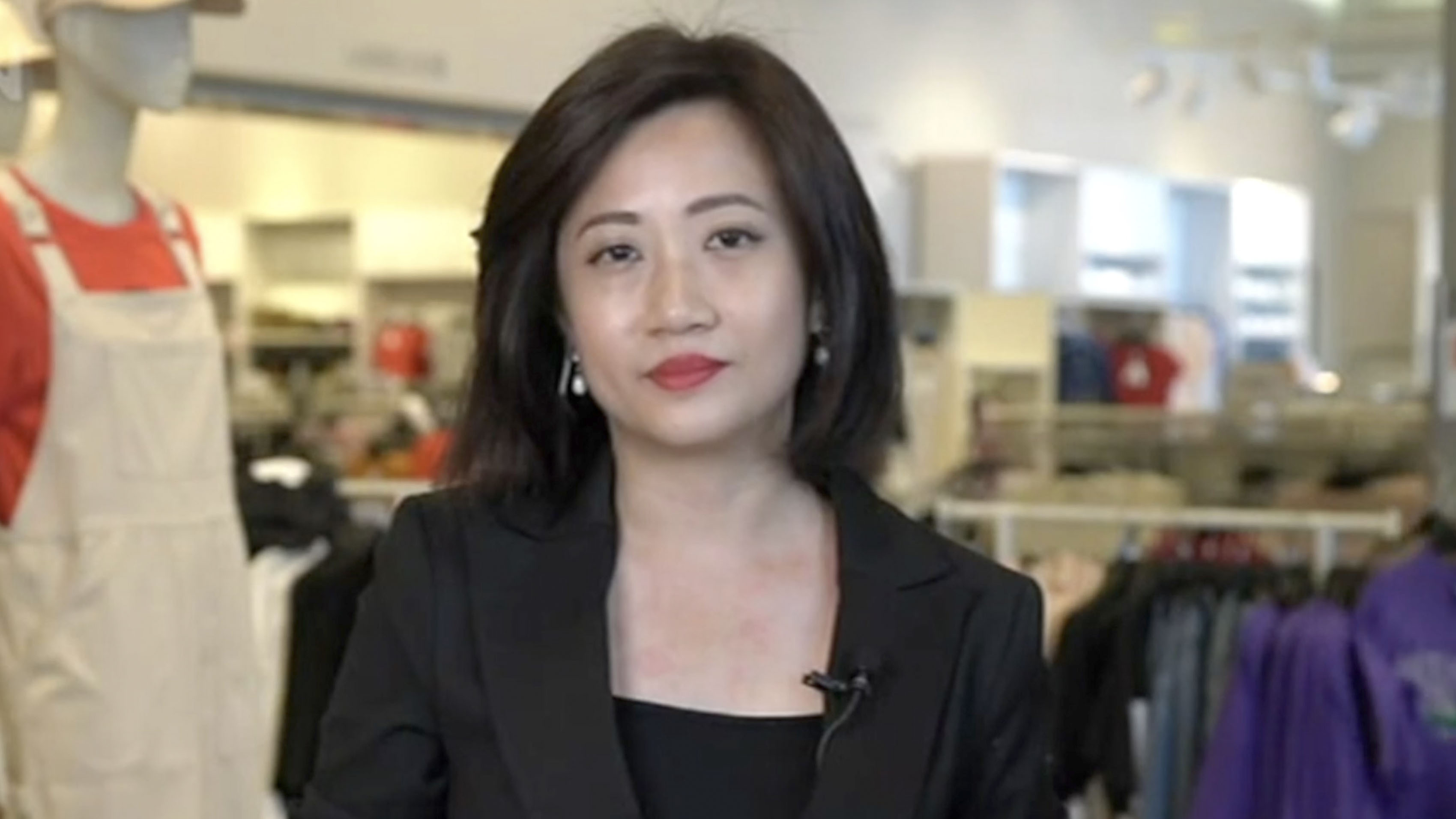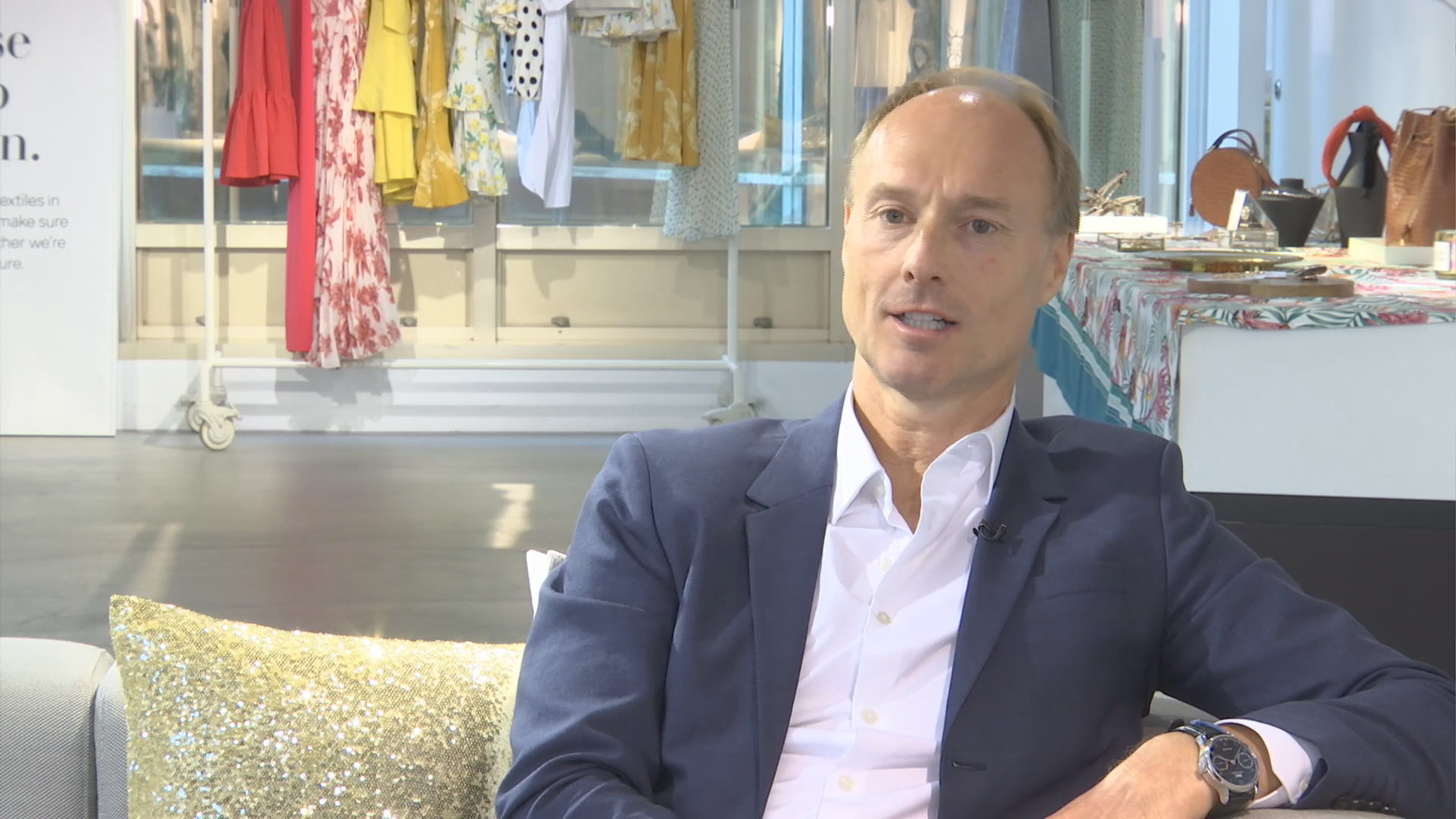

A recent slew of exits of foreign fast fashion brands from China has brought to light the question: Just how viable and enticing is it to do business in the world's most populous market?
Well, despite the heightened competition and slower than expected growth from China's retail apparel space, foreign brands - those still operating in China, that is - remain optimistic about the market outlook.
"The competition in China is tough but it’s also interesting because that makes us constantly want to improve," Magnus Olsson, country manager at H&M's Greater China markets, told CGTN.
While Olsson acknowledged there’s been a slowdown in the company's growth in China, he noted it’s nothing strange as the base has also gotten bigger.
H&M's China segment may no longer be achieving high double-digit growth rates in net sales like it did when it first entered the country in 2007, but it's worth far outpaces its European market.

What's enticing these fast fashion players is perhaps China's 2.08 trillion yuan (around 300 billion U.S. dollar) retail apparel market. Though Euromonitor expects the market's growth rate to slow down to 3.5 percent and 3.2 percent in 2019 and 2020 respectively (from a 7.8 percent growth in 2018), China’s apparel market remains the largest in the world - over five times bigger than India and almost eight times larger than Russia.
Olsson believes the Chinese market will be big and good enough for both Western and local brands.
"China remains a very important market for us. We are committed here for the long-term, and we are here to stay," he added.
Meanwhile, the Chairman of Uniqlo, Tadashi Yanai, in the Japanese company’s 2018 annual report downplayed China's slowing consumption, noting that "China's one of the most buoyant places we operate in."
Uniqlo's Greater China revenue was up 26.9 percent year-on-year to 439.8 billion yen in its fiscal year that ended August 31, 2018, and now makes up about one fifth of the group revenue.
Inditex, the Spanish parent company of Zara, Bershka, Pull & Bear and Massimo Dutti, does not reveal its China numbers in its annual reports.

Magnus Olsson, country manager at H&M’s Greater China markets, said the group remains optimistic on the Chinese market. /CGTN photo
Heightened competition from homegrown players
The rapid rise of mobile e-commerce in China has really hurt some of these foreign fast fashion brands operating in China, said Professor Guan Zhenzhong of the Institute of Internet + Industry Innovation, of Southwest Jiaotong University.
"Foreign brands used to lead Chinese retailers in the era of information technology, and in the era of PC internet, but now China has surpassed them in some ways, including that of mobile internet and payments," Guan pointed out.
"And now, Chinese online retailers have a better understanding of Chinese consumer habits. If foreign brands don't grasp these trends, I foresee the pace of them closing down shop will accelerate," he added.
Forever 21, which announced in April 2019 it has shut down its online stores and will close all of its physical stores in China in the near future, is the latest exodus.
"Many of Zara, H&M, Gap's clothes are actually produced in China. Now domestic manufacturers have started to create their own brands, basically transitioning from an OEM to ODM player, and what we call 'independent innovation'," Guan said.
"Moreover, many of these local brands have penetrated China's fifth-tier cities, while foreign brands are still mostly only familiar with the big cities," he added.
Besides, some of China's local brands have also acquired foreign brands, thereby increasing their product range across the entire price and quality spectrum.

Professor Guan Zhenzhong, Institute of Internet + Industry Innovation, of Southwest Jiaotong University says that some foreign brands aren't able to keep up with the pace of China’s e-commerce./ CGTN Photo
Digitization and localization: the way forward
H&M's Olsson said a lot of the company's physical purchases actually start from the mobile.
"In today's retail environment where retail is being disrupted, it's going through a fast change and there’s nothing called online and offline in the perspective of the customer," he said.
"So it's important for us to continue to invest in an innovative, multi-channel business to make sure both platforms are actually integrated, to make it easier and more seamless for our customers to shop."
A check into Uniqlo's 2018 annual report showed that online sales now made up 15 percent of its Greater China sales. It plans to bump this up to 30 percent in the next two years.
Localization is also key as China's retail apparel market is fragmented, said professor Guan.
Adidas, which garners a 2.1 percent market share in China, already has the biggest share in the country's apparel market, according to cross-checks with Euromonitor.
Uniqlo attributed its burgeoning same-store sales growth in China to its tailored product mixes for different climate regions within China.

China's retail apparel market, at close to 300 billion U.S. dollars, is the largest in the world. /CGTN Photo
What tickles Chinese consumers' fancy?
Guan said there were two major turning points in China.
"In 2014, fast fashion brands were still on the rise. But it was also in that year that China’s mobile internet began its explosive growth," Guan said.
"In 2017, China's economy slowed down and this affected the fast fashion industry. By then, China’s technological advancements have spurred consumers to be more conscious of getting a better bang for their buck," he continued.
Now, China's online retailers have a better understanding of Chinese consumer habits, he said. Guan predicts that if foreign brands do not grasp these trends, the speed to which they close doors will accelerate.
According to Guan Zhenzhong, today millennials search for "personality".
"They don't care if it's local or foreign, as long as they feel comfortable and the clothes offer good value for their money - especially in the face of increased choices," he commented.
H&M acknowledges Chinese consumers are getting more fashion sophisticated and still sees the fashion customer in China as very interested in what's happening around the world, Olsson said.
"Through our global reach to pick up global trends very fast and translate them into local offers, we think that will be appreciated also in the future," he added.
(Video filmed by Li Yang)

Copyright © 2018 CGTN. Beijing ICP prepared NO.16065310-3
Copyright © 2018 CGTN. Beijing ICP prepared NO.16065310-3